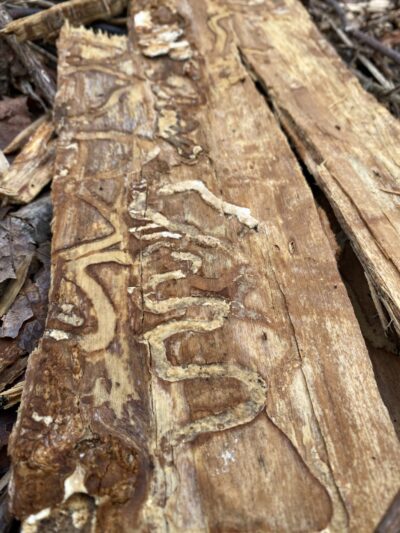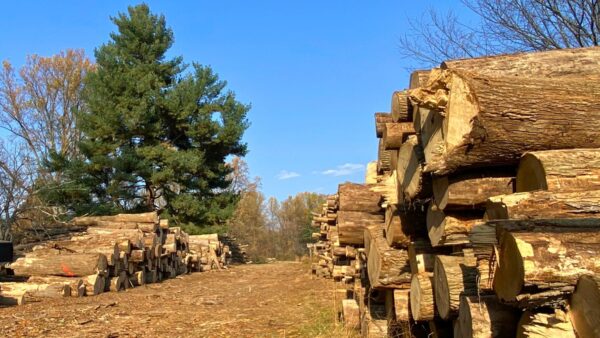Embark on a trail of change at Tyler Arboretum, as we share the story behind bidding farewell to 1,500 ash trees, safeguarding our trails, and nurturing a flourishing future for our beloved forest sanctuary.
You might have recently come across images like these, perhaps in the recent publication in the Daily Times. While we’ve been regularly updating our community for months, we understand these images may be surprising, and we’re here to address some common questions.
Why are so many trees being cut down?
We’ve made use of many of the downed trees for wildlife habitat when feasible, but let’s delve into why the removal of these trees has become necessary. Over the past few years, the emerald ash borer has made its way through the forest at Tyler Arboretum. This tiny, bright green insect leaves minimal traces on the tree’s exterior but feeds on the cambium layer, which prevents the tree from getting water and nutrients, ultimately causing its death.
This spring, we identified around 900 standing dead ash trees affecting trail safety. Unfortunately, the count has risen to approximately 1,500, and we’re committed to removing these hazards. While some trees, brush, and wood chips are left for wildlife habitat, the sheer volume of organic matter necessitates removal.

Ash tree log displaying squiggly channels created by the emerald ash borer in the cambium layer.

Are you finished?
Regrettably, there’s more work ahead. Phase 2 of the project begins in the new year, with the aim of reopening trails in spring 2024.
What happens to the logs?
Some of the wood will go on to have a new life. Ash wood is often used in flooring, tool handles, and recreational items like oars and baseball bats. Some of the wood is compromised, but will still be useable as firewood, and some will be chipped for our paths, trails, and for wildlife habitat.
Most trees from our initial phase are now on the ground, but due to their number, leaving them where they are is not feasible. These piles are the logs that are being staged for removal. These pictures really put the crisis into a tangible form. These were all hazardous trees, and have now been removed.
How Can I Help?
Tyler Arboretum is actively working on this project with the first phase of removal, and plans for the next phase of removals, the restoration, replanting, and the needed work to keep invasives under control. There are many ways to help!
- Contribute: Support our ash tree fund for essential restoration work.
- Volunteer: Join us when restoration work begins; volunteers play a crucial role.
- Stay Connected: Even if you can’t contribute or volunteer now, staying connected, visiting, and actively participating in our community helps us emerge stronger from this crisis. Your interest and involvement keep Tyler a wonderful sanctuary in our region!






